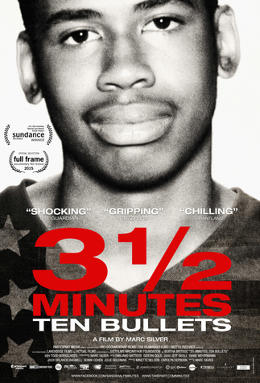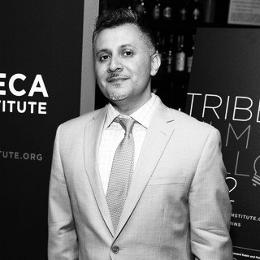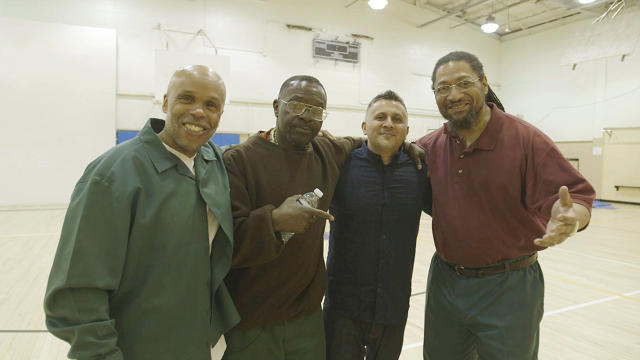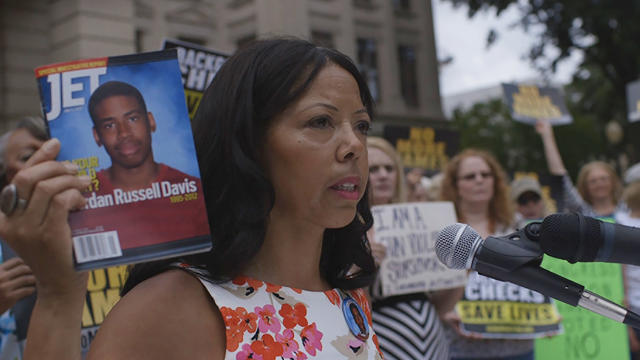Why The Tribeca movie Institute Is Doing Screenings In jail
The poster on the wall was once a kind of marquee. “TRIBECA film INSTITUTE community SCREENING series — ‘3 ½ MINUTES, 10 BULLETS’ — FEBRUARY seventeenth, 2016.” however the venue was once very different from the same old fare of Tribeca, very best identified for its glamorous annual film competition in the big apple, based by way of Robert De Niro. Tonight’s screening was once in Otisville Correctional Facility, a medium-security state jail about 60 miles northwest of manhattan. The audience was a roomful of prisoners in muted green and maroon apparel, a number of of whom had been serving out existence sentences.

nearby stood Virgilio “Vee” Bravo, Tribeca’s VP of training. He watched from the rear of the room as three inmates he had been working with for months stood in entrance of the men, introducing the movie they have been about to observe. “Let’s thank Virgilio Bravo and Tribeca,” mentioned Charles “Chas” Ransom, whom Bravo had chosen as a “facilitator” thru a competitive course of. the lads broke into applause. “giant Vee!” known as one, and Bravo laughed and playfully performed a bodybuilder pose. Later, any other of the facilitators, Moses El-solar White, stood earlier than the target audience and said, “I don’t see a room filled with bad dudes. I see a room full of good dudes who made dangerous decisions.”
The night’s screening—Tribeca does two each month—would additionally function an on-ramp to other educational initiatives in the jail; a number of males in the target audience had come to early screenings the place they discovered a few larger training program in the prison supplied thru John Jay college of prison Justice. sooner than the screening commenced, Alejo Rodriguez, one of the vital three facilitators for the night, asked how a number of the males had been to prior screenings. Roughly two thirds raised their fingers; the rest had been new. Rodriguez welcomed them and informed them they have been in for a powerful movie—concerning the 2012 shooting dying of unarmed black teen Jordan Davis by using a white vigilante—and discussion. “individuals who comprehend, know. those who don’t comprehend, journey with us, man,” he stated.
The lights within the front of the room dimmed for the film, however a naked bulb on the rear wall remained shining on the again of the lads’s heads, the simpler for a correctional officer on an improved platform oversee the boys. The film started to play.
working jail screenings had now not been in Vee Bravo’s job description. When he used to be hired at Tribeca in 2011, the primary thrust of his gig used to be to deliver movie training initiatives into big apple’s public colleges. indeed, that remains a big a part of his job, and he at present oversees quite a lot of film-related programs that provider over 18,000 public college students and academics.

but Bravo had a longstanding passion in mass incarceration and jail education. growing up in a ways Rockaway, Queens, folks in his neighborhood kept getting locked up, so regularly on simple drug possession. “i noticed there used to be a direct relationship between the prison industrial complex and negative communities of color,” he recalls nowadays. within the ’90s, he changed into a hip-hop journalist, enhancing a column for a journal about prisons, and he commenced to consult with them. in the meantime, the U.S. jail inhabitants soared (it now stands at 2.four million, giving the U.S. one of the most perfect incarceration charges on this planet).
Bravo kept looking to work to attach prisoners to the outside world. When he began making documentaries for PBS, he made certain to screen them in jail. When he worked for the famed documentarian Albert Maysles, he did the identical. “I considered jail audiences as a vital stakeholder crew in the neighborhood,” he remembers.
When he interviewed for the job at Tribeca in 2011, he didn’t convey up his relevant ardour. “I don’t think it got here up,” he says. however soon sufficient, once he acquired the job, Bravo broached the idea of prison schooling initiatives together with his boss.
It used to be a bit of of a chance. finally, this wasn’t what he’d been employed for. but over time, he’d developed a little of a philosophy about pitching projects he used to be passionate about to bosses.

the underside line, he says, to folks mulling pitching a new initiative to their very own bosses: Don’t be obscure. Don’t pitch a fleeting fancy. “If someone opens the door for you, you have to assume management and be capable of take that on,” he says. Don’t be a dreamer; be a planner. “all of us need to end poverty, we all wish to find a treatment for cancer,” he says. “however when you put that in the form of a proposal, attach a budget to it, and look at effects, figure out how you can measure success,” then you may have a significantly better shot of getting buy-in from a sophisticated.
Bravo brought up the theory with Tribeca’s government director. within days, he had a green gentle. by way of 2012, he was once screening motion pictures on Rikers Island. And in 2014, he met Baz Dreisinger.
Baz Dreisinger came to jail education just a few years later than Bravo. In 2001, she visited Shawangunk Correctional Facility, a maximum security prison, to present a talk on race, which she studied. She was floored via the level of the responses she obtained. “there were one hundred men at that speak, and they have been asking me one of the sharpest, most incisive questions I’d ever been asked in my lifestyles,” she says. “After I walked out that night time, it mainly was an obsession for me.”

again, as with Bravo, changing into an recommend for jail training used to be not essentially in her job description. Dreisinger used to be a tutorial; she had a PhD in English from Columbia college. by way of 2005, she was working at John Jay faculty of prison Justice in the big apple, however John Jay didn’t have a prison schooling software; jail training basically had grown vanishingly uncommon due to the fact bill Clinton’s 1994 omnibus crime bill eliminated federal monetary support for prisoners. (The Obama administration simplest tentatively commenced to reinstate some Pell provides for prisoners last yr).
“It was once now not simple to promote to our board,” recollects Dreisinger. And “it was a problem getting even progressive funders.” nonetheless, Dreisinger prevailed. today, she runs John Jay’s prison-to-faculty Pipeline, which launched at Otisville in 2011. students begin college on the within; when they’re released, they’re guaranteed a slot within the city university of recent York gadget. There are about 25 current college students in jail, and 25 who’ve “come home,” says Dreisinger.
What Dreisinger swiftly discovered, though, was that there used to be more demand for her program than there was availability. And within the case of certain long-time period prisoners, many had already maxed out on educational opportunities available to them—infrequently a long time in the past. “i might continuously get approached in jail by males like Alejo, Chas, and El-sun, who had long sentences and have been hungry for tutorial opportunities,” she says. So she joined forces with Vee Bravo and Tribeca, and the screening sequence at Otisville used to be born.
Like Bravo, Dreisinger’s is a story of taking the job she was given, and molding it into the one she wanted. “That’s the story of my existence,” she says. “people think I’m a sociologist or criminologist, but I discovered it on the job. The prison-to-faculty Pipeline, I’m more pleased with that than anything in my lifestyles.”
She goes on: “if you’re passionate about it, an avid learner, and dedicated to it, then build it and they will come.”

At Otisville, the screening winds to its conclusion. Ransom, White, and Rodriguez wreck the men into three groups, top them in dialogue. In Rodriguez’s team, conversation about the movie turns heady immediately, as the men pick aside Florida’s “Stand Your floor” regulations, which so wildly lower the bar for self-defense claims. “citizens are killing individuals as a result of they notion he had a gun? That has to be addressed,” says one. “My mother informed me you must train young black men easy methods to deal with police authority,” says some other. “These aren’t issues younger white males have to learn…”
because the night unfolds, the dialog winds more normally to the subject of justice.
“What does it take to have justice?” White asks the lads, as Bravo looks on.
one of the most incarcerated males responds right away: “schooling.”
(49)














